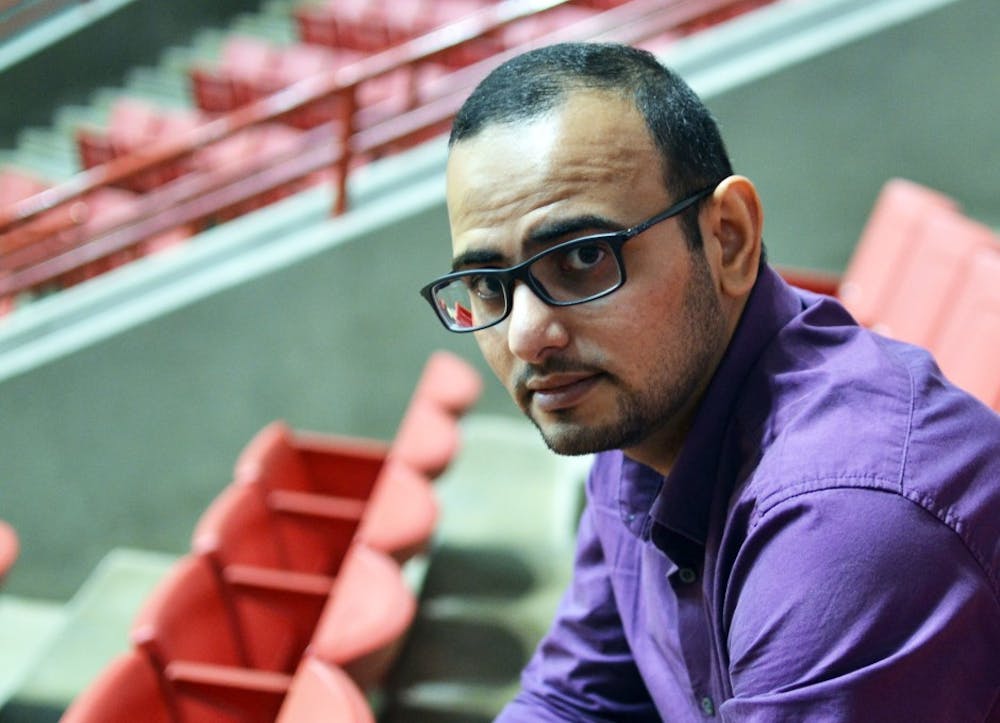TV Land is blaring inside Post 19 of the American Legion in Muncie, Indiana. Horses trample across the screen and cowboys stand up in their stirrups, shouting to one another and shooting. No one seems to be watching this rerun of Walker, Texas Ranger, but the volume on the TV that looms high on a shelf in the corner would be loud enough to hamper conversation – if there were any in the room.
On this Monday afternoon, the lights are dimmed over the ’70s-style wood tables and chairs that fill most of the club. The only movement is at the bar, where one gray-haired, short-statured white woman disinterestedly turns the pages of the day’s newspaper. A heavyset bartender in his 70s fills her glass, then lumbers out from behind the bar to sit on one of the stools, stare into space, and think. The cowboys keep on shooting.
While the program moves into a commercial break, doors open at a different gathering place in this town of 70,000 people. Four miles away, beyond the White River, the Ball State University campus, and a boulevard of fast food restaurants, the Islamic Center of Muncie awaits a round of worshippers. Men with reverent attitudes, many of them with dark hair and bronze or olive-colored skin, file inside. Their feet tread the thick white carpet and they kneel, praying and listening to a sermon that instructs them to love one another, sacrifice, and have self-discipline.
Some of those attending the mosque are recent immigrants from Saudi Arabia, Iraq, and elsewhere, now making their homes in the American Midwest. Some are converts. Some plan to live their whole lives in Muncie; others are only here for school or work. All are part of a population of American Muslims that has more than doubled in the past 20 years.
And, like any minority group that grows within a majority culture, they haven’t been without opposition.
Fahad Aseery arrived in the United States from Saudi Arabia in mid-August 2009 as a doctoral student in Ball State University’s special education program. An avid fan of American movies and sporting events, he was pleased when he learned that admission to Ball State men’s basketball games is free for students.
With a wave of his student ID, he walked past the ticket takers, into the cavernous hall of the arena, and through one of the many curtains that hang at the entrances to the court and viewing area. He looked around and saw some open seats several rows up. Glancing down at the action already taking place on the court, he picked an open chair and sat down. Less than 10 minutes later, he sensed someone was approaching him and looked up.
Three middle-aged men were moving toward him. The first stopped just short of Fahad’s knees and held out his ticket.
“You’re in my seat,” Fahad remembers hearing the man grumble.
Embarrassed, Fahad stood up. It was his first American basketball game at this institution or any other, and he didn’t know how the seating worked.
“I’m sorry,” he said with an accent, five years removed from his accent of today, which still makes him self-conscious. “It’s my first time.”
The men behind the speaker grumbled and watched as Fahad turned to leave. When he looked back, he saw a menacing look on the first man’s face.
“Go home,” the first man said. “Go back where you came from.”
Fahad knew the man was talking about more than his off-campus apartment.
To continue reading, visit BallBearingsMag.com





